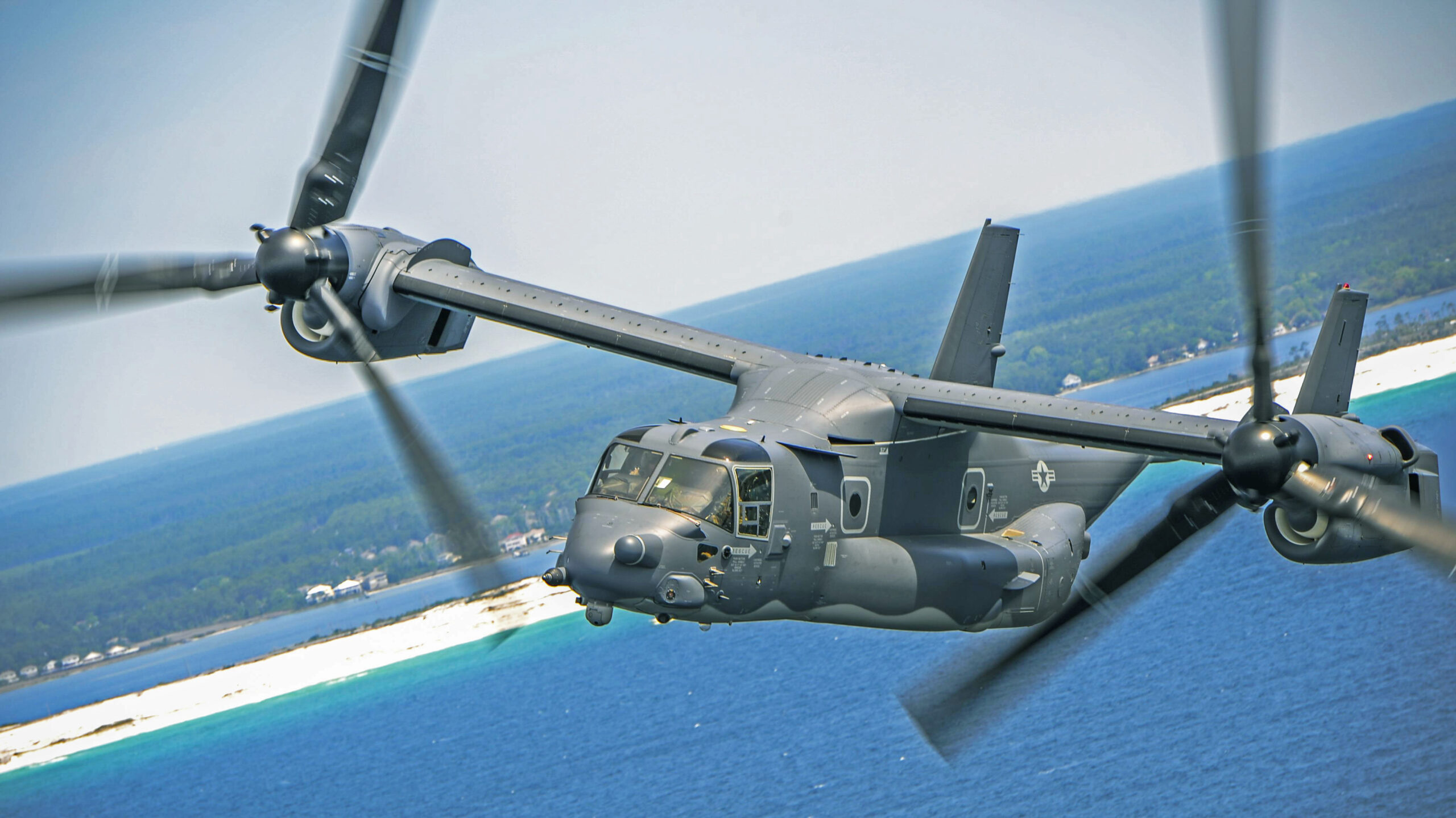Tokyo has requested the U.S. military suspend operations of its V-22 Osprey tilt-rotor aircraft in Japan, following a crash that took place off the Japanese coast yesterday. While the accident was the first fatal incident involving a U.S. military aircraft in Japan in five years, it threatens to reopen concerns in that country about the safety record of the V-22 in general. You can read our initial report on the accident here.
In the Japanese parliament today, Japanese Minister of Defense Minoru Kihara said: “The occurrence of such an accident causes great anxiety to the people of the region… and we are requesting the U.S. side to conduct flights of Ospreys deployed in Japan after these flights are confirmed to be safe.”

As well as these public words from Kihara, it seems that an official request has been put in by the Japanese government to suspend U.S. military V-22 flights in Japan, except non-emergency ones.
The Japanese military, which also flies the V-22, will also ground the type until the circumstances of yesterday’s crash become clear. This was confirmed by another defense ministry official, Reuters reports.
Following his address in parliament, Kihara confirmed that the U.S. military was still operating Ospreys in Japan. He said that Japan’s regional defense bureau had confirmation of 20 takeoffs and landings by Ospreys around U.S. bases by 3.30 p.m. local time today.
A spokesperson for U.S. military forces in Japan did not immediately respond to a request for comment from Reuters.
Meanwhile, in a post on X (formerly Twitter), Rahm Emanuel, the U.S. ambassador to Japan, said: “Our focus is on the ongoing search and rescue operations, and we’re praying for a safe return.”
Yesterday’s crash involved a CV-22B from the U.S. Air Force’s 21st Special Operations Squadron stationed at Yokota Air Base. The Osprey was taking part in a routine training sortie when it came down in waters off Yakushima Island, western Japan. That island is located around 45 miles south of the Kagoshima region on the southern main island of Kyushu.

According to eyewitness accounts, the aircraft’s left engine appeared to be on fire as it approached an airport for an emergency landing in clear weather and light winds. These claims have so far not been substantiated.
So far, the U.S. military has only confirmed the death of one service member, who was retrieved from the water yesterday unconscious and not breathing. A search-and-rescue effort to recover the other seven crew members is ongoing.
This effort has so far involved several different Japanese and U.S. assets, including U.S. Marine Corps KC-130J Hercules, as well as U.S. Air Force MC-130J Commando IIs, HH-60G Pave Hawks, and other CV-22Bs. The following audio clips include communications recorded during the aerial refueling of a CV-22B by an MC-130J, as well as the crew of the MC-130 investigating a potential light in the water near the crash site.
While the V-22 has never been far from controversy, due in considerable part to its safety record, the tilt-rotor has come in for particular criticism in Japan, where it began to be operated by the U.S. Marine Corps at Marine Corps Air Station Iwakuni on the main island of Honshu in July 2012. Since then the Marine Ospreys have moved to Futenma Air Station in Ginowan, Okinawa, where there have been more protests by campaigners unhappy with the deployment of the tilt-rotor in Japan.

Then, in 2018, ahead of the deployment of the first U.S. Air Force CV-22Bs in Japan, there were demonstrations outside Yokota Air Base near Tokyo.
“While we are excited to have the CV-22 Ospreys on base, not everybody shares the same sentiment,” a message on the airbase’s Facebook page read at the time. “All members of Team Yokota are encouraged to remain safe by avoiding any protesters.”
According to local reports, the U.S. Air Force had six CV-22Bs deployed at Yokota Air Base before yesterday’s crash, while another 24 U.S. Marine Corps MV-22Bs are stationed at Futenma Air Station, Okinawa. As of October, the Japan Ground Self-Defense Force (JGSDF) had received 14 of 17 the V-22Bs it has on order, these being based at Camp Kisarazu in Chiba prefecture.

Japanese activists have repeatedly highlighted accidents that they say reflect the poor safety record of the Osprey. One previous accident occurred in Japan, when a U.S. Marine Corps MV-22B crashed off the Okinawa coast in December 2016, with all five crew members being rescued. Ospreys in Japan were grounded after the accident, which turned out to be the result of contact between the refueling hose and one of the Osprey’s rotor blades while topping up from a tanker at night.
More recently there have been several fatal incidents involving U.S. military Ospreys. In August this year, a Marine Corps MV-22B crash in Australia killed three U.S. service members. Last year, an MV-22B crash near El Centro, California, in June killed five Marines, while four more Marines were killed in March when an MV-22B crashed during maneuvers in Norway.
Osprey operators, including the Japanese military, have repeatedly refuted concerns about its accident rate. Mishaps need to be seen in the context of a frenetic operational tempo including hundred of airframes, combat deployments, and challenging mission profiles. Meanwhile, it remains true that the type’s troubled development phase continues to dog its reputation.
For the time being, it looks like the American-owned aircraft will remain active in Japan, including for non-emergency missions. While we await to see the outcome of the accident investigation, yesterday’s incident has already reignited public debate about the safety of the V-22 in Japan.
Contact the author: thomas@thedrive.com
